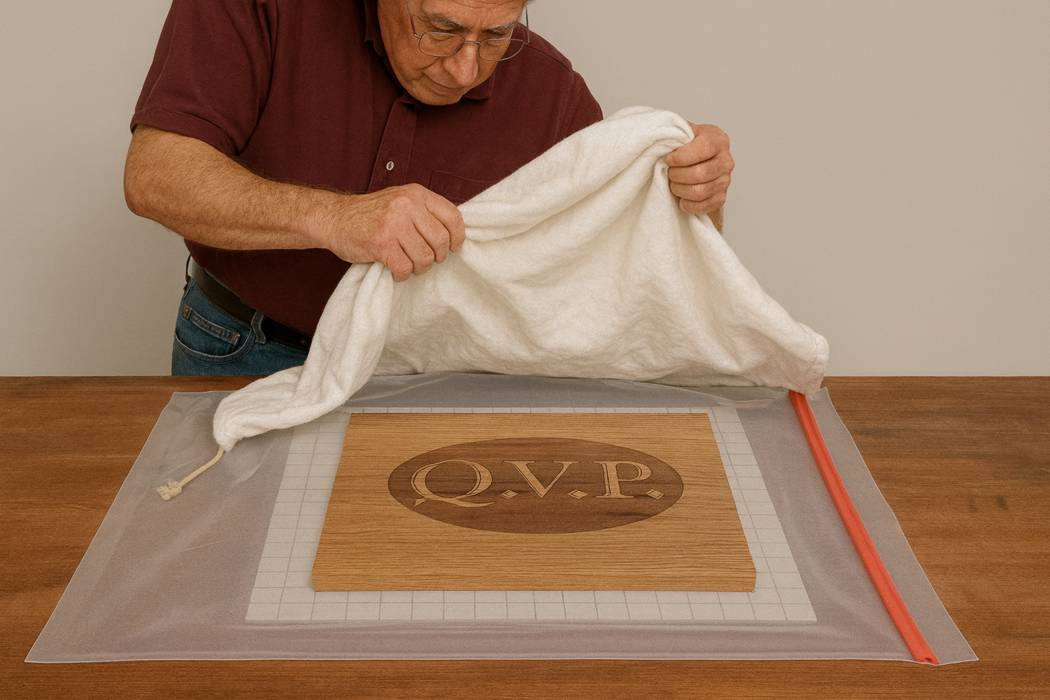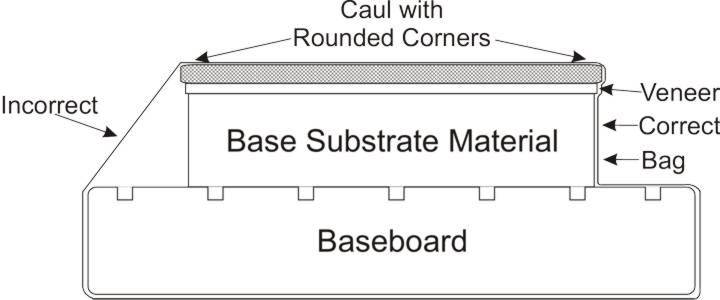
Vacuum Veneering & Laminating in Cooler Weather:
Keeping Projects Flowing as Temperatures Drop

Cold weather impacts every part of the veneering and laminating process, from how glue cures to how flexible your
vacuum bag feels. Luckily, with a few simple adjustments, you can
keep your workflow steady and your results strong all winter long. By managing temperature, adding gentle heat, and keeping
your materials conditioned, you'll prevent the common cold weather issues that slow production and compromise quality.
In this guide, we will look at how temperature affects adhesives, why vacuum bag flexibility matters, and how a basic
electric blanket setup can make your veneering process more efficient, reliable, and easier on your equipment.
1. How Cold Weather Affects Adhesive Performance
As the temperature drops, adhesives react differently. Veneer glue, contact cement, and epoxies all rely on chemical reactions that slow down when it's cold. This can lead to weaker bonds, uneven drying, and glue lines that fail long after pressing.
Here's what happens:
Slower curing: Cold air slows down the reaction, doubling or tripling the set time.
Weaker bonds: Adhesives that never reach the right temperature may not fully cross-link.
Uneven results: Cool ambient air can cause glue to skin over before bonding properly.
To prevent these problems, store your glue and materials indoors so they stay at room temperature. A warm glue bottle
performs far better than one that's been sitting on a cold concrete floor.
2. Cold Temperatures and Vacuum Bag Flexibility
When your shop cools down, your vacuum bag becomes stiffer and less elastic. This stiffness makes
it harder for the bag to conform to your workpiece, especially if you're pressing curves or complex shapes. Cold bags are also more prone to pinholes
and cracking, since the material can't stretch evenly under pressure.

Keeping your vacuum bag warm makes it more pliable and extends its life. A warm bag drapes smoothly
over your work, conforms better, and reduces stress points that can lead to wear and leaks.
3. Adding Gentle Heat: The Electric Blanket Trick
The simplest, most cost effective way to fight cold temperatures is to add a bit of gentle, consistent heat. You don't need an
industrial blanket. Just a standard household electric blanket will do the job perfectly.
What You'll Need
1. Electric blanket: Provides consistent heat across the surface.
2. Packing blanket or quilt: Insulates the heat and prevents rapid loss.
Layering these two blankets creates a warm microclimate around your vacuum bag, keeping glue curing
efficiently and the bag material supple.
4. Why Thrifted Blankets Work Best
You don't need new, expensive gear. The best electric and packing blankets often come from thrift stores, yard sales, or online marketplaces. Heavy
quilts and moving blankets are perfect. They trap heat efficiently and can handle dust, glue, and wear without worry.
Pro-Tip: Use one packing blanket directly over the electric blanket and another to wrap around the sides
for maximum insulation on large panels.
5. Safety Tips
- Inspect electric blankets for damage before each use.
- Avoid placing heating elements directly against wet glue.
- Keep cords and connections away from sharp edges.
- Maintain moderate temperatures. Warm, not hot.
- Let panels cool slowly after curing to prevent stress cracks.
6. The Payoff: Stronger Bonds and Smoother Bags
Adding gentle, consistent heat pays off in several ways:
- Faster, more reliable curing.
- More flexible vacuum bags
- Fewer pinholes or cracks.
You'll keep production on schedule and improve both the quality and consistency of your work, all without waiting for spring.
7. Final Thoughts
When temperatures drop, don't let your workflow freeze with them. With a little heat and smart setup, vacuum veneering and laminating
through the winter becomes simple and dependable.
Stay warm, keep your materials conditioned, and remember: gentle heat and smart insulation are your best allies for professional results all year long.








